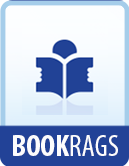Still, negotiate it he must and he did! And after luncheon in the garden, with the cat in his lap, Miss Greenaway perceptibly thawed out, and when the editor left late that afternoon he had the promise of the artist that she would do her first magazine work for him. That promise was kept monthly, and for nearly two years her articles appeared, with satisfaction to Miss Greenaway and with great success to the magazine.
Bok now devoted his attention to strengthening the fiction in his magazine. He sought Mark Twain, and bought his two new stories; he secured from Bret Harte a tale which he had just finished, and then ran the gamut of the best fiction writers of the day, and secured their best output. Marion Crawford, Conan Doyle, Sarah Orne Jewett, John Kendrick Bangs, Kate Douglas Wiggin, Hamlin Garland, Mrs. Burton Harrison, Elizabeth Stuart Phelps, Mary E. Wilkins, Jerome K. Jerome, Anthony Hope, Joel Chandler Harris, and others followed in rapid succession.
He next turned for a moment to his religious department, decided that it needed a freshening of interest, and secured Dwight L. Moody, whose evangelical work was then so prominently in the public eye, to conduct “Mr. Moody’s Bible Class” in the magazine—practically a study of the stated Bible lesson of the month with explanation in Moody’s simple and effective style.
The authors for whom the Journal was now publishing attracted the attention of all the writers of the day, and the supply of good material became too great for its capacity. Bok studied the mechanical make-up, and felt that by some method he must find more room in the front portion. He had allotted the first third of the magazine to the general literary contents and the latter two-thirds to departmental features. Toward the close of the number, the departments narrowed down from full pages to single columns with advertisements on each side.
One day Bok was handling a story by Rudyard Kipling which had overrun the space allowed for it in the front. The story had come late, and the rest of the front portion of the magazine had gone to press. The editor was in a quandary what to do with the two remaining columns of the Kipling tale. There were only two pages open, and these were at the back. He remade those pages, and continued the story from pages 6 and 7 to pages 38 and 39.
At once Bok saw that this was an instance where “necessity was the mother of invention.” He realized that if he could run some of his front material over to the back he would relieve the pressure at the front, present a more varied contents there, and make his advertisements more valuable by putting them next to the most expensive material in the magazine.




